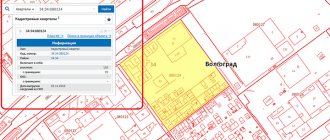How to convert a garden house into a residential one
It is necessary to submit an application to the local government authorities, to which a conclusion on the inspection of the house must be attached.
The conclusion is prepared by a legal entity or individual entrepreneur who is a member of a self-regulatory organization for engineering surveys. For example, BTI enterprises throughout the country.
What should be in the conclusion? It describes the site and the house itself, which must meet the basic requirements for a residential building. The decision to recognize a house as residential is made by the local administration, which has jurisdiction over the territory of the gardening or dacha community.
Types of residential buildings and nuances of placement of commercial properties
Let's start with the fact that since the times of the USSR we have had such a concept as “standard series of residential buildings”. There are about three hundred of these series [Kvmeter, 2020]. Often, the visual design differences between them are minimal and only noticeable to a professional eye. So, in houses of type P-42 there are no one-room apartments, but only 2-, 3- and 4-room apartments:
and in houses of type P-43 there are no 4-room apartments, but only 1-, 2- and 3-room apartments:
To consider all the series, it will take 5 years of study at a civil engineering university, so we will limit ourselves to only the general characteristics of houses that can be found in Russian cities.
Types of houses by number of storeys:
- Low-rise: from 1 to 4 floors.
- Mid-rise: from 5 to 8 floors.
- Multi-storey: from 9 floors and above.
Depending on the number of floors, certain requirements for a residential building are prescribed. So, in houses from 6 floors and above, an elevator is required, and in houses from 10 floors and above there must be two elevators, one of which is freight.
Types of houses according to construction material:
- Brick.
- Panel.
- Block.
- Monolithic.
- Brick-monolithic.
- Aerated concrete.
- Foam concrete.
- Wooden.
The last 3 points relate to low-rise construction. Thus, houses of no more than two floors are usually built from wood and foam blocks, and from aerated concrete, depending on the strength class, buildings from 1 to 5 floors can be built (aerated concrete B1.5 - for one-story houses, B2 - for two-story houses, B2.5 - up to 3 floors, B5 – up to 5 floors).
High-rise buildings of old construction either consist only of residential premises, or the 1st floor is given over to shops. In recent years, almost all “high-rise buildings” have planned the 1st floor for commercial real estate: offices, bank branches, shops, pharmacies, beauty salons, etc.
The Housing Code prohibits the placement in residential buildings of bathhouses, saunas, public toilets, funeral service bureaus, X-ray rooms, veterinary clinics, medical diagnostic rooms and anything that could potentially harm the health of residents.
In addition, stores for household chemicals, automobile spare parts, building materials, and warehouses for fuel, lubricants and explosive materials cannot be located in residential buildings. Children's clubs and creative studios are prohibited from operating in basements and ground floors for fire safety reasons.
If any of the above appears in a residential building, residents have every chance to get rid of an unwanted and often dangerous neighborhood by filing a complaint with local authorities, the housing inspectorate, Rospotrebnadzor or the prosecutor's office.
There are also some nuances for setting up legally permitted types of businesses: beauty salons, pharmacies, bank branches, etc. If the entire first floor is residential and the arrangement requires the transfer of the premises from residential to non-residential, the consent of the general meeting of residents of the entire building is required, and not just the entrance in which the premises planned for business are located [Russian Housing Code, 2021].
Please note that non-residential premises must be equipped with a separate entrance. Moreover, when installing a separate entrance, residents have the right to demand financial compensation for the fact that the entrance to an office or store will be located on a public area. By occupying part of the local area with entrance steps, a store or office reduces the size of the residents’ common property, depriving them of part of their property. You can learn more about the nuances of the process in each individual case from lawyers [D. Kornev, 2018].
If the first floor is initially planned for commercial real estate and all premises have a separate entrance, the consent of the residents for locating a business from the permitted list is not required. As a rule, sales of commercial and residential real estate are in no way interconnected, and the developer has the right to sell premises for commercial real estate to anyone.
Next comes the responsibility of the owner of the premises, legal entity or private entrepreneur. And if a legal entity or private entrepreneur places in a residential building something prohibited for placement in the housing stock, he will be responsible.
If a legal entity or private entrepreneur organizes a business that is legally allowed to be located in a residential building, this is exclusively his personal business and right. In this case, residents can express dissatisfaction only if the owner or tenant of commercial real estate violates sanitary standards, exceeds the permissible noise level, or company employees smoke in the wrong place.
However, exactly the same complaints can be made against neighbors if they make loud noise, smoke or litter in common areas. The permissible noise level in an apartment is specified in special rules regulating noise protection in various situations and at different facilities [Electronic Fund of Legal and Regulatory Technical Documents, 2011]. The latest changes to the document were made in 2017 [Electronic fund of legal and regulatory technical documents, 2017].
The document is quite voluminous, with many tables and calculations. In short, residents should not be constantly disturbed during the daytime by sounds louder than 55 dB, which corresponds to the volume of normal human speech. The permissible noise level at night is no higher than 45 dB, which is approximately equivalent to the sound of a running refrigerator. The exceptions are cases of emergency response, children crying, dogs barking, the sound of dripping water and other objectively uncontrollable situations.
In addition, in the fight for their rights, residents can rely on the law “On the sanitary and epidemiological welfare of the population” [Electronic Fund of Legal and Regulatory Technical Documents, 2021]. And also on the law “On protecting the health of citizens from the effects of environmental tobacco smoke and the consequences of tobacco consumption” [Electronic fund of legal and regulatory technical documents, 2021]. Please note that changes have been made to these documents in 2021.
What to do if your neighbors smoke or litter in the entrance or somewhere else in a public place and it bothers you? Lawyers recommend making a video recording of the violation by filming it on your phone and contacting the police. The police are obliged to respond to such violations. Whether the case will actually go to court and the violator will be punished is not a fact, but it can be intimidating with the consequences and fray your nerves. Although, of course, it is preferable not to quarrel with neighbors and resolve everything peacefully.
What else can be said about high-rise buildings of recent years of construction? At a minimum, the service for residents is thought out in much more detail than in the last century. Thus, in residential complexes, parking and underground parking for residents’ cars, parking for bicycles are commonplace; there is often a children’s playground with a soft surface, a sports ground with exercise equipment, tables for chess, dominoes, and arm wrestling.
Of course, good owners of residential complexes always have neat painted benches in their yards, street lights that work at night, a clean tidy yard and washed corridors and entrances.
In luxury complexes, almost everywhere there is a fence, a barrier at the entrance to the yard, 24-hour video surveillance, a security service and, in addition to security, a concierge. True, the nuances of arranging premises for the concierge, the list of responsibilities and remuneration of the concierge often cause disagreements among residents. How to set up a concierge service so that there are no misunderstandings later, it is better to consult with a lawyer [Preparing for trial, 2021].
In any case, security plus a concierge is a guarantee of safety and the ability to leave at any time without fear that your apartment will be robbed. In addition, with a higher level of security, you can afford a greater level of comfort. For example, a glass door at the entrance to the front door or entrance without fear that it will be broken by hooligans.
Let's digress a little and say that the front door and entrance are today used as synonyms. The difference is that St. Petersburg prefers the word "front" or "front door", while the rest of the country uses the word "entrance". Linguists and philologists see a deeper difference, clarifying that a driveway is a road along which one can approach a house [Stack Exchange, 2016]. However, this and other philological nuances are now more of a theoretical cognitive nature.
“About entrances and front doors” from the architect and urbanist Andrey Elbaev is also very informative
By the way, from Andrey Elbaev you can find not only informative and educational content, but also quite practical recommendations for arranging the entrance to a house, which he outlined in his video “Modern entrance groups: 10 principles” :
But let's return to the types of residential buildings. Another fundamental difference between many modern residential complexes and everything that came before is the presence on the 1st floor near the elevator of a room for prams and bicycles:
This is not only an additional convenience for those living in the house. This is also the best safety for the elevator and corridors, along which you don’t need to push the stroller, the wheels inevitably clinging to corners, thresholds and doors. A good owner always thinks through everything down to the smallest detail, and here it is truly “my home is my fortress.”
In general, the topic “What a comfortable yard should be like for residents of a multi-story building” is very popular, and you can always get fresh ideas from those who are ready to share them [E. Regen, 2018]. If there is a unanimous desire from the residents, you can even set up a barbecue area and stage in the yard.
Of course, all these amenities increase the cost of paying for services to maintain the house and local area, bringing it closer to the cost of maintaining real estate abroad. In countries with hot climates, in addition to all of the above, residential complexes have their own swimming pool for residents, a VRV air conditioning system for common areas and often their own garden in the local area, as well as a common terrace.
However, our rich people often buy apartments in residential complexes abroad for the purpose of renting out and generating income, and buy villas and mansions for themselves. Both here and abroad, the owner of a private housing construction unilaterally decides what he needs in the house and what he does not, and he himself provides everything necessary for life. Several types of private houses are common both in Russia and abroad.
Types of private residential buildings:
- A cottage is an individual house for permanent all-season living.
- A mansion is a household that stands apart from all the others (hence the name). Also intended for permanent residence.
- Villa is a country house for holidays.
- The estate is a private house with a large plot and several auxiliary buildings.
- A residence is a high-status property with a large plot, almost always with its own swimming pool, tennis court and/or golf course.
- Townhouse is a series of two- and three-story houses with common walls, usually in the same architectural style, but variations are possible.
- Viletta is an “Italian townhouse” with elements of Mediterranean architecture.
- Brithouse is an English-style townhouse where houses are united by a common architectural concept.
- Duplex (twinhouse) is a two-section house with a common roof and side wall, but also different entrances for two homeowner families.
- Quadrohouse - a house for 4 families with 4 separate entrances.
- Lanehouse is a so-called “blocked development” or a group of low-rise buildings with common communications, but different architectural design.
- Maisonette is a house with apartments on two or three levels.
Let us illustrate some of the least familiar types of private buildings to our citizens.
Viletta:
Brithouse:
Duplex:
Quadhouse:
Lanehouse:
Maisonette:
Now is the time to talk about apartments that are more familiar to our compatriots.
What is the difference between a garden house and a residential one?
A garden house is essentially a non-permanent building intended for temporary residence. Now, as Bednyagin explained, in the Unified State Register of Real Estate, garden houses are designated as “a residential building with a non-residential purpose.” But soon all of them will automatically be renamed “garden houses”.
Dachas higher than three floors cannot be built, but underground floors can be built
A residential building is a separate building that has three above-ground floors. Its height can be no more than 20 meters. A residential building must consist of rooms and auxiliary premises and cannot be divided into separate apartments. The enclosing structures of the house must have heat-insulating properties that allow living in it all year round. In other words, the walls should not be made of plywood or cardboard, but, for example, logs or bricks. The house must be equipped with engineering systems. This includes water supply, sewerage, electricity, heating. Also, a residential building must meet the requirements of insolation and ventilation, that is, the people living in it must be warm, light and comfortable.
Types of apartments
So, we have gradually come to the conclusion that the types of apartments in our houses are also different. For example, 1-, 2-, 3- or 4-room, 1-, 2- and 3-level, communal and corridor type, with adjacent and separate rooms, with or without an open plan, with panoramic glazing or the so-called “ French balcony":
Balconies, by the way, can be separate, as, for example, in standard houses of the P-42 series, or double, as in standard houses of the P-43 series. Alternatively, the house may not have balconies, but loggias. Let us clarify that a loggia and a balcony have differences. A balcony is a hanging structure that protrudes beyond the wall of the house, and a loggia is a built-in (“recessed”) area, limited on three sides by walls.
And our houses may have different windows. For example, ordinary hinged single-, double- or triple-leaf windows, with or without a window, slider windows, horizontal or American vertical, with folding and combined sashes that can work as tilting or turning ones.
As for the maximum number of rooms, in apartment buildings developers have traditionally limited themselves to 4-room apartments. Those who needed more simply bought neighboring apartments, sometimes with exits to different entrances, and made a passage between them. For example, artist Nikas Safronov did this when he bought premises on three floors [Home-ideas, 2017]. The result is a 15-room apartment with an area of one thousand square meters, where each room is decorated in its own unique style:
As you can see, the variety of layouts and design nuances are truly limitless. A physically healthy person can choose any housing based on his ability to pay, taste and preferences. However, there is a category of people who are fairly limited in their choice and for whom many technical aspects of home improvement are very important.
Do not build higher than three
Bednyagin drew attention to the fact that when building new country houses (whether buildings in holiday villages or on lands allocated for individual housing construction), it will no longer be possible to build a dacha of 4-5 or more floors.
Bednyagin clarifies that many people mistakenly think that if the Town Planning Code now specifies the maximum height of a residential building at 20 meters, then it is possible to build at least 6 or 7 floors (at the rate of three meters for each floor). “The height of a floor can be five to six meters, but the above-ground floors themselves cannot be more than three. At the same time, the developer can lay several more floors underground,” he clarifies.
We are talking only about real estate under construction and planned for construction. If the house is already standing and registered as a property, no one will force you to demolish the extra floors.
A residential building must consist of rooms and auxiliary premises and cannot be divided into separate apartments. Photo: Sergey Mikheev/RG
Do it before March 1st
A simplified procedure for registering rights to residential and garden houses is valid only until March 1. It is enough to fill out a declaration for the built house and contact a cadastral engineer who will prepare a technical plan. And submit documents for registration through the public services center.
This procedure is especially relevant for people who have already completed the construction of their home. This will make their life much easier. And those summer residents who have begun construction of a residential building, but do not have time to complete it before March 1, can submit a notification to the local government about the start of construction. From March 1, notification will become mandatory for real estate that is being built on lands for individual housing construction and on SNT lands.
60 million summer residents live in Russia today, according to estimates by the Union of Gardeners
What does the notice include? In this document, the applicant himself describes the building area, the planned height of the house, and the number of floors. And makes a graphic description of the location of the house on the land plot. The local administration reviews the notification for compliance of these parameters with urban planning regulations.
The notification nature of the document suggests that you don’t have to wait for a summary from local officials. But still, it is better to wait for an answer, so as not to redo what has been built. After all, it will be possible to register real estate after another notification, which, together with the technical plan, the developer submits to the same administration after completion of construction. And it is the administration that will send documents to Rosreestr for cadastral registration and registration of property rights.
— There may be such a situation: you started to build a house, but in the process you decided to change the original plan. For example, at first they wanted two floors, but then they decided that three would be better. What is needed for this? Notify the administration, and there will be no problems with subsequent registration,” explains Bednyagin.
If you have any questions...
Specialists of the Moscow Regional BTI provide individual free consultations on real estate registration issues in branches and Consulting Centers based on the MFC, at on-site meetings with representatives of SNT and other types of partnerships. MOBTI has 62 reception points and 41 Consultation Centers based on MFCs throughout the Moscow region.
You can find out about the upcoming dates of on-site meetings with gardeners, choose the most convenient branch of the State Unitary Enterprise MO "MOBTI", and find out more about the services provided on the website mobti.ru or by calling the hotline
What happens if notification is not given?
— If you built a house and did not take advantage of the simplified procedure for registering residential and garden real estate, or sent a notification, then in fact you created an unauthorized building. This means that the court may oblige you to demolish it or bring it into compliance with urban planning requirements. The demolition of such a building or bringing it into compliance is done at the expense of the owner of the land plot, emphasized Alexander Bednyagin.
He advises especially taking these points into account when buying a house or cottage. You only need to purchase real estate that is registered.
How to register at the dacha
There are several main criteria for registration in residential buildings located on the lands of gardening or dacha cooperatives, explains Fyodor Mezentsev, executive director of the Union of Summer Residents of the Moscow Region. The site must be intended for gardening, dacha farming, be located within the boundaries of a populated area, the house must comply with urban planning standards, be recognized as residential, and have a postal address.
Alexander Bednyagin: Demolition of unauthorized construction is carried out at the expense of the owner of the land plot. Photo: Igor Kurashov








